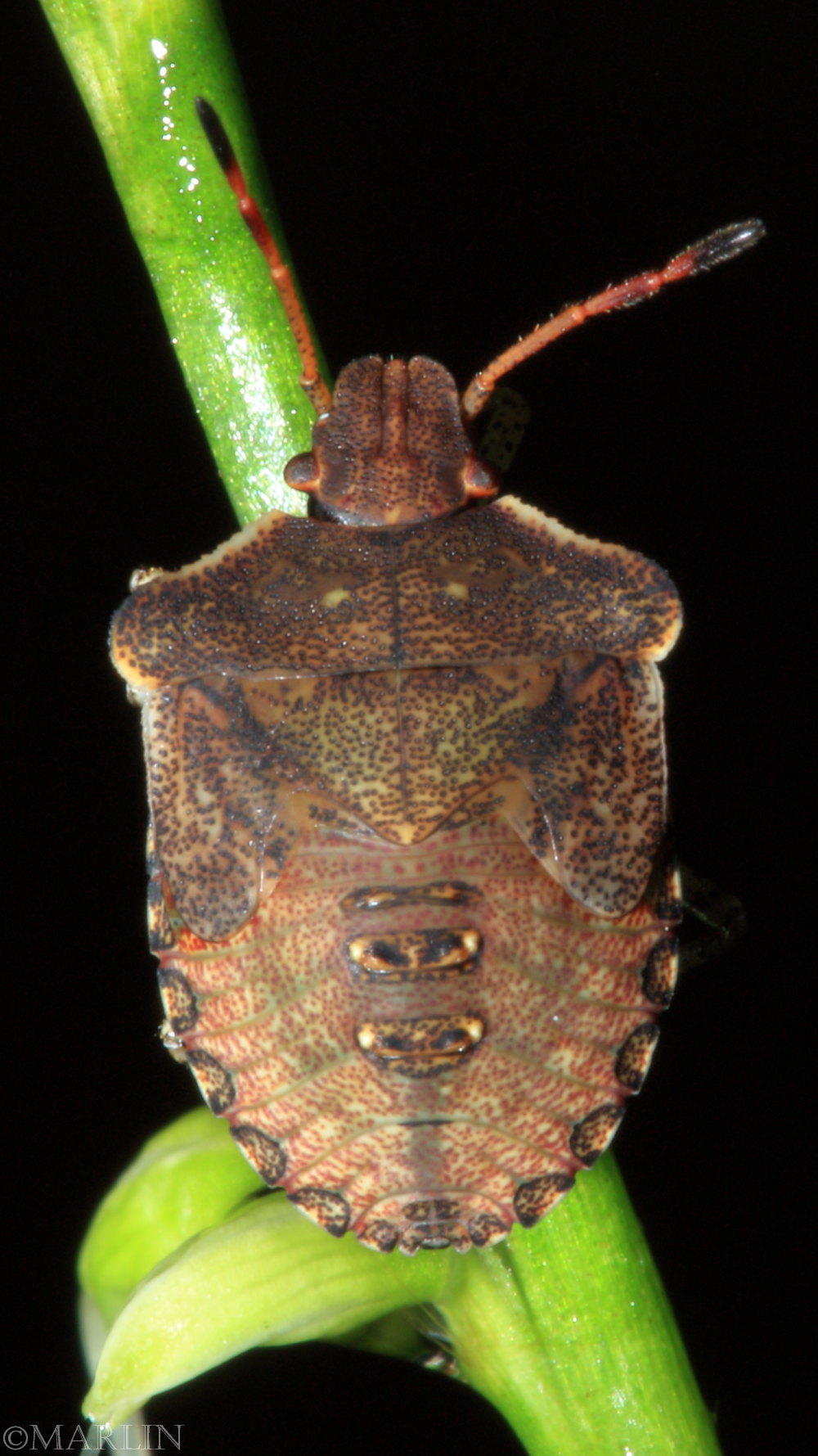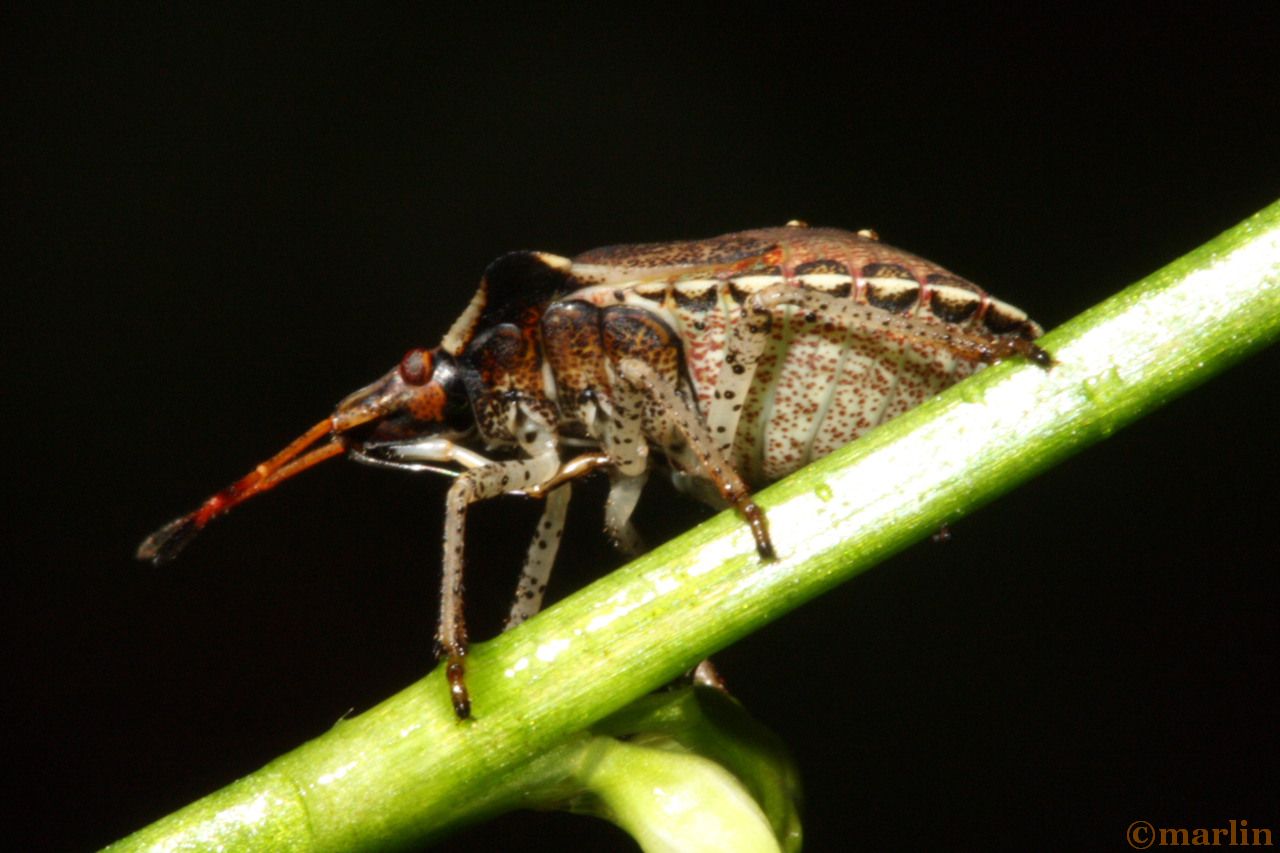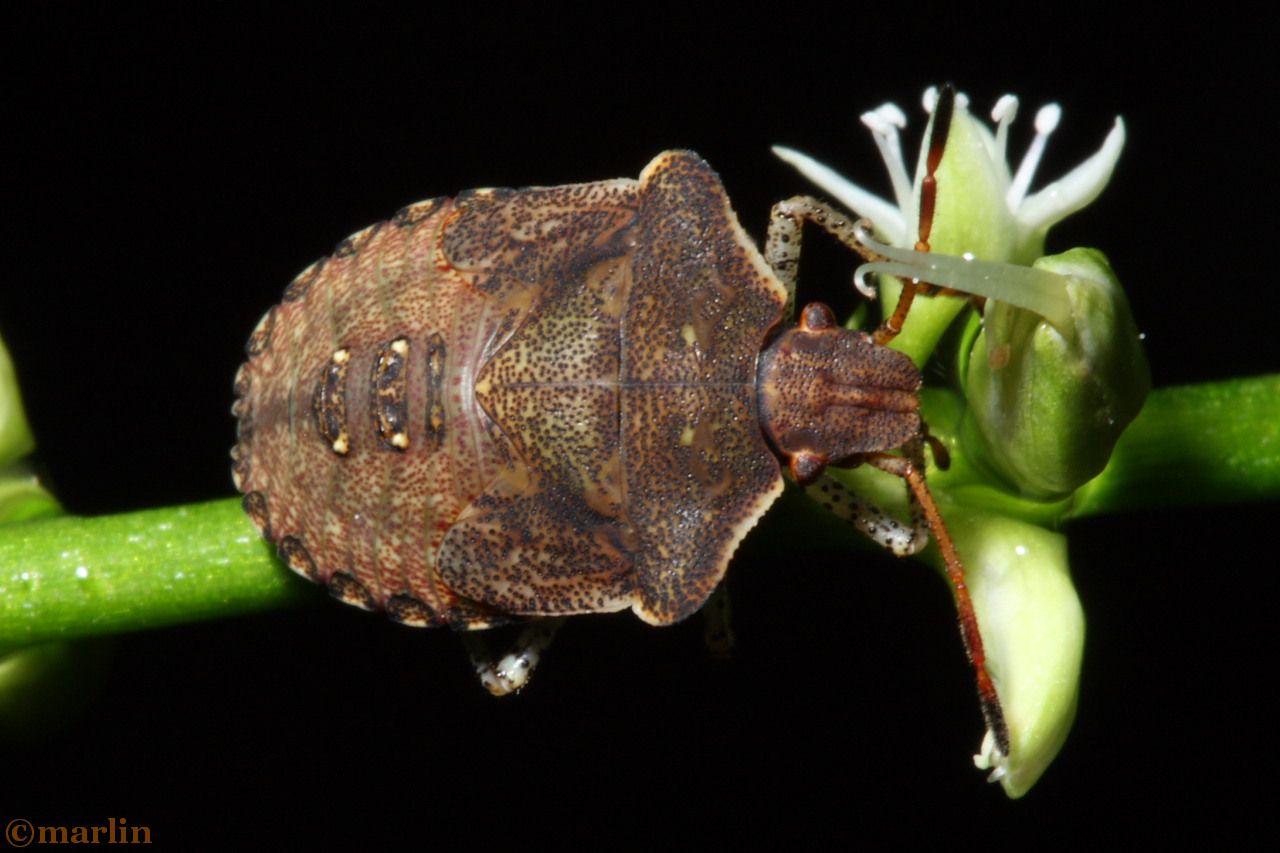Stinkbug Nymph – Euschistus tristigmus luridus
I found this energetic dusky stink bug nymph on a warm day in August, in the Allegheny National Forest near Marienville, Pennsylvania, USA.
Like all true bugs, this insect sucks, literally, injecting enzymes which break down plant tissues and cell walls, then vacuuming up the resulting nutritional slurry. Because stinkbugs feed on a wide variety of plants, including milk thistle, echinacea, asparagus, oats, mint and goldenrod, they are found in a wide variety of habitats.
Stink bugs feed on developing seed of many hosts including trees, shrubs, vines, weeds and many cultivated crops.
Tachinid fly Trichopoda pennipes lays its eggs on many types of bugs, including leaf-footed and stink bugs.
Reference: Bugguide.net, Stink Bug Nymph Euschistus tristigmus luridus



